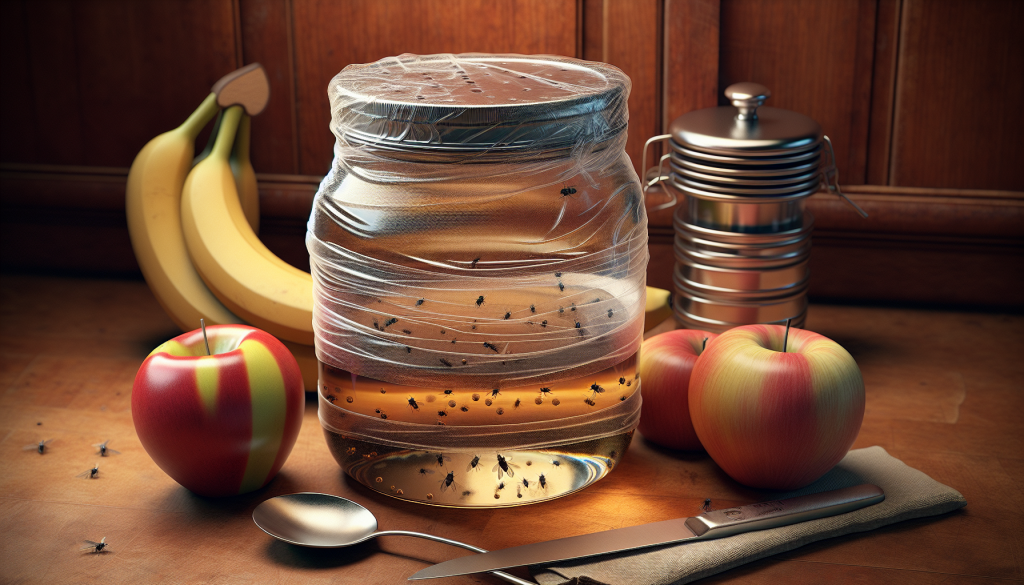October 30th, 2025
|
Share with
Dealing with an infestation of fruit flies can be a pesky problem, particularly in the warm summer months when fruits and vegetables tend to sit out on countertops, ripening just a bit too quickly. The good news is that you don’t have to turn to potentially harmful pesticides to eliminate these tiny intruders. With a few household items and a splash of vinegar, you can create your own effective, eco-friendly fruit fly trap. Welcome to your ultimate guide to a simple and efficient fruit fly trap DIY solution.
Understanding the Fruit Fly Dilemma
Fruit flies are attracted to ripened or fermenting fruits and vegetables. They also thrive on moist environments like drains, garbage disposals, or empty bottles and cans. Therefore, managing fruit flies often requires a comprehensive approach that includes cleaning, sealing, and trapping.
Gather Your Supplies
To create a homemade fruit fly trap, you will need some basic supplies that you likely already have in your kitchen:
- A Container: This could be a jar, a glass, a bowl, or any container that has a wide mouth. If you prefer a more aesthetic option, consider using a Mason jar, which provides both effectiveness and a touch of rustic charm.
- Vinegar: Apple cider vinegar is the preferred choice due to its strong, fruity smell that attracts fruit flies. If you don’t have apple cider vinegar, white vinegar will also suffice.
- Plastic Wrap or a Jar Lid: If you are using a jar with a lid, you’ll also need a tool to poke small holes (like a hammer and nail). Plastic wrap can be used with bowls or glasses.
- Rubber Band: To secure the plastic wrap, or if you have a jar, a lid that you can puncture.
- Dish Soap (Optional): A few drops of dish soap can break the surface tension of the vinegar, making it harder for fruit flies to escape once they land.
Crafting Your DIY Fruit Fly Trap
Step 1: Prepare Your Container
- Pour about 1/4 to 1/2 cup of apple cider vinegar into your chosen container. The vinegar should be enough to cover the bottom, but it doesn’t need to fill the container. If you’re using white vinegar, consider adding a piece of ripe fruit to enhance the lure.
Step 2: Enhance the Trap with Soap
- Add a few drops of dish soap to the vinegar. This step is not mandatory, but it increases the trap’s success rate by altering the vinegar’s surface tension.
Step 3: Create an Entry Point
- If you’re using a jar with a lid, puncture the lid with small holes using a hammer and a nail. The holes should be large enough for fruit flies to enter but small enough to prevent easy escape.
- For containers without lids, cover the top with plastic wrap and secure it with a rubber band. Then, use a toothpick to poke small holes in the wrap.
Step 4: Position Your Trap
- Place your fruit fly trap in an area where you’ve noticed fruit fly activity. Common spots include the kitchen counter, near fruit bowls, or next to open trash cans.
Step 5: Monitor and Maintain
- Check your trap regularly. You should start seeing results within a few hours to a few days. If the vinegar becomes full of trapped flies, refresh the mixture to keep the trap effective.
Other Tips for a Fruit Fly-Free Home
While traps are excellent for managing an existing problem, the best defense against fruit flies is prevention. Here are a few additional steps:
- Store Produce Properly: Keep ripe fruit in the refrigerator and consume it promptly to avoid attracting flies.
- Seal Garbage: Ensure that compost bins and trash cans are tightly sealed.
- Clean Drains: Regularly clean sink drains with a vinegar or baking soda solution to eliminate breeding grounds.
- Dispose of Overripe Fruits: Routinely check your fruit bowl and discard any fruit that is too ripe.
Conclusion
Creating a DIY fruit fly trap with vinegar and household items is an efficient and environmentally-friendly method to rid your home of these persistent pests. Not only does it involve minimal costs, but it’s also safe for use around children and pets, as opposed to chemical alternatives. By understanding the behavior of fruit flies and employing a combination of prevention and trapping, you can ensure that these uninvited guests are kept at bay. So grab your materials and watch as this simple DIY project brings peace back to your kitchen.
